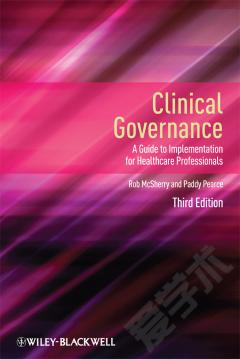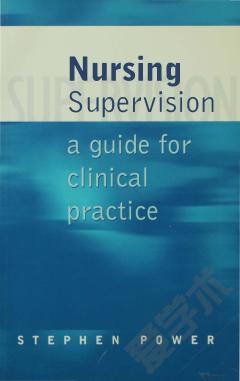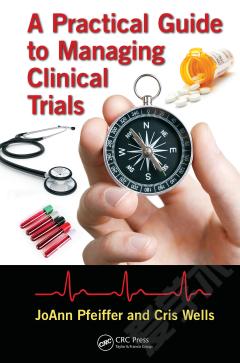Clinical Governance —— A Guide to Implementation for Healthcare Professionals
----- 临床管理 第3版
CHAPTER 1: INTRODUCTION AND BACKGROUND: CLINICAL GOVERNANCE AND THE NATIONAL HEALTH SERVICE. Introduction. Background. Why the need for clinical governance?. Political. Changes in health policy. The impact of organizational change on the provision and delivery of health care. Public. Rising patient and public expectations and involvement. Demographic changes. Lack of public confidence in healthcare provision due to media coverage of poor clinical practices. Trend towards greater access to healthcare information. Professional. Increased patient dependency. Advances in health care technology. Rising numbers of complaints going to litigation. Summary. Key Points. Suggested reading. References. CHAPTER 2: WHAT IS CLINICAL GOVERNANCE?. Introduction. The evolution of clinical governance. Origins of clinical governance. Corporate governance and the NHS. The development of a framework of corporate governance. Improvements in the organisation and staffing of internal audit. The development of controls assurance. Defining clinical governance. The key components of clinical governance. Non-clinical services that support clinical governance. Controls assurance. Standards for Better Health. The need for national healthcare standards. Defining the healthcare standards. Describing the new healthcare standards. The standards vs existing systems. Applying the healthcare standards to an example of practice. Criteria for evaluating the standards. Conclusion. Key points. Suggested reading. Useful websites. References. CHAPTER 3: A GUIDE TO CLINICAL GOVERNANCE. Introduction. The key components of clinical governance. Healthcare organisations and the achievement of quality care. Risk management. Managing performance. Clinical incident reporting. Individual performance review. Complaints and accolades monitoring. Sickness and absence monitoring. Quality improvement. Clinical risk management and clinical audit. Continued practice and professional development. Implementing continuing professional development within an NHS organisation. Research and development (R&D). Evidence-based healthcare. Quality information. Information requirements for effective clinical governance systems. Healthcare organisations. Clinical teams. Individuals (healthcare professionals and patients). Accountability. Conclusion. Key points. Suggested reading. References. CHAPTER 4: APPLYING CLINICAL GOVERNANCE IN DAILY PRACTICE. Introduction. Introducing clinical governance into healthcare organisations. Clinical governance: what is a baseline assessment and development plan?. What does a clinical governance action plan look like and why is it necessary?. Case study 1: Applying the principles of clinical governance to an organisation. Case study 2: Applying the principles of clinical governance to a team. Case study 3: Systems and processes associated with the application of a clinical governance framework at individual level. Conclusion. Key points. Suggested reading. References. Appendix 4.1 an example of a clinical governance action plan. Appendix 4.2 an example of a personal development plan . CHAPTER 5: IDENTIFYING AND EXPLORING THE BARRIERS TO THE IMPLEMENTATION OF CLINICAL GOVERNANCE. Introduction. The potential barriers affecting the implementation of clinical governance. Culture. Management. Management styles and clinical governance. Change management. Reaction to change. Leadership . Communication. Education and training. Informing the organisation, team and individuals about clinical governance. Knowledge. Support. Conclusion. Key points. Suggested reading. References. CHAPTER 6: CLINICAL GOVERNANCE AND THE LAW. Introduction: defining terms. Litigation in the NHS. Setting the scene. Where we are now with clinical governance?. What is competent clinical practice?. How the courts determine competent clinical practice. The law and clinical guidelines. Personal updating: knowledge and clinical guidelines. Good guidelines practice. Conclusion. References . CHAPTER 7: THE IMPACT OF CLINICAL GOVERNANCE IN THE NATIONAL HEALTH SERVICE. Introduction. Clinical governance: friend or foe?. Revealing the impact of clinical governance. Accountability. Organisational structures. Continuous quality improvement. Performance management. Culture. Recipe for successes. Conclusion. Key points. Suggested reading. References. CHAPTER 8: CONCLUSION: THE FUTURE OF CLINICAL GOVERNANCE FOR HEALTHCARE PROFESSIONALS. References
{{comment.content}}








 京公网安备 11010802027623号
京公网安备 11010802027623号